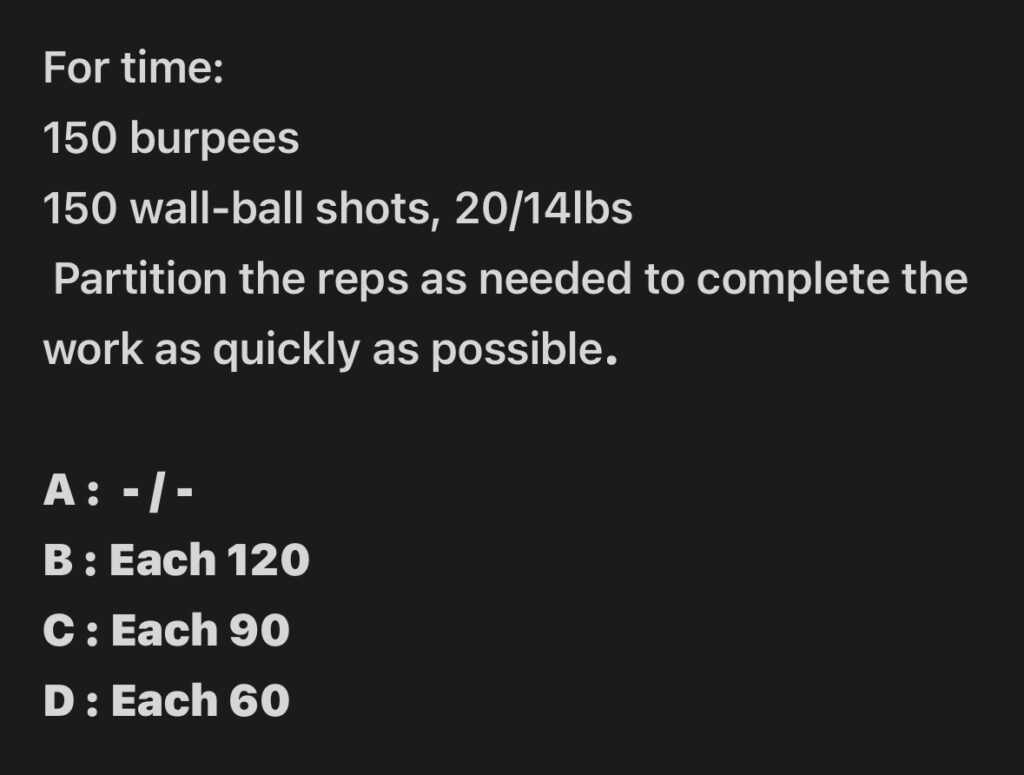Today’s Winter WOD: “Frosty Fitness Challenge”
1. Warm-Up (10–12 Minutes)
Because cold weather can tighten muscles, spend a bit of extra time warming up to reduce injury risk.
- General Cardio (3 Rounds):
- 30 seconds of jumping jacks
- 30 seconds of high knees
- 30 seconds of butt kickers
- 30 seconds of arm circles (15 seconds forward, 15 seconds backward)
- Dynamic Mobility:
- 30 seconds of air squats
- 30 seconds of leg swings (each leg, front-to-back)
- 30 seconds of hip circles
- 1 minute of alternating lunges with a twist
Tip: If training outdoors or in a cold gym, consider wearing layers that you can remove as your body warms up.
2. Skill/Strength Work (10 Minutes)
Focus on technique to build a strong foundation during the off-season.
- Option A: Deadlift Technique
- 5 sets x 3 reps at a moderate weight
- Emphasize proper form and controlled movements.
- Option B: Kettlebell Swings
- 3 sets x 15 reps
- Focus on explosive hip drive and maintaining a neutral spine.
Choose one based on your equipment availability and current training focus.
3. Main Workout: “Winter Warrior AMRAP 20”
This is a 20-minute As Many Rounds As Possible workout that targets strength, power, and cardiovascular conditioning.
- Exercises:
- 10 Box Jumps
(If box jumps feel too high-impact, substitute with step-ups on a sturdy bench or platform.) - 15 Wall Balls
(Use a 20-lb ball for men and a 14-lb ball for women, or adjust according to your level.) - 200-Meter Run or Row
(If running outside in winter, consider running on a treadmill or doing a rowing machine workout indoors.) - 5 Pull-Ups
(Scale by using jumping pull-ups or band-assisted pull-ups as needed.)
- 10 Box Jumps
Instructions:
Complete as many rounds as possible in 20 minutes. Keep track of your rounds and reps, and focus on good form over speed, especially when your muscles are still adjusting to the cold.
4. Cool Down & Recovery (5–10 Minutes)
Help your body transition back to rest and reduce muscle soreness.
- Static Stretching:
- Hamstring stretch
- Quadriceps stretch
- Chest and shoulder stretches
- Lower back stretches
- Additional Recovery:
- Use a foam roller on sore spots.
- Consider a slow-paced walk to bring your heart rate down gradually.
- Stay hydrated, and if you’re training outdoors in winter, change out of damp clothes quickly to prevent stiffness.
Winter Training Subject: “Building a Strong Base Through Winter Conditioning”
Focus Areas:
- Technique & Form:
Winter is an excellent time to refine movements (e.g., Olympic lifts, kettlebell swings, and bodyweight exercises) when the pace can be controlled and focused. - Mobility & Recovery:
Emphasize dynamic warm-ups and static stretching sessions. Incorporate yoga or dedicated mobility work a couple of times a week to maintain flexibility in colder weather. - Cardiovascular & Metabolic Conditioning:
Use indoor cardio (like rowing or treadmill running) when outdoor conditions are challenging. This builds endurance while minimizing the risk of cold-related injuries. - Mindset & Consistency:
Winter can be a mentally challenging season for training. Focus on consistency, setting small goals, and gradually increasing intensity. This “base-building” phase sets you up for stronger performance when the weather improves.
By following this plan, you’ll not only get a robust, balanced workout but also set a strong foundation for your overall fitness during the winter months. Adjust the intensity and volume as needed based on your fitness level and available equipment. Stay warm, listen to your body, and enjoy your training!




I am really impressed together with your writing talents and also with the structure for your blog. Is this a paid subject or did you modify it your self? Anyway stay up the nice high quality writing, it’s uncommon to peer a nice weblog like this one these days. !
Thank you so much for the kind words! 😊
Actually, the content was created by the coach at my CrossFit box — a super talented person when it comes to both fitness and writing.
I just posted it with a bit of formatting, so all the credit goes to the coach!
I’ll definitely pass your compliments along — and I’ll try to keep sharing great content. Thanks again!